"Wrath of Khan" Worm Found in Mussels
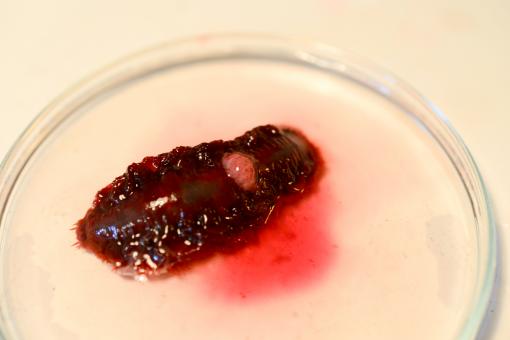
"That looks like the thing they put in Chekov's ear in Star Trek II: Wrath of Khan!"
It's not often you hear that phrase in the wet lab of the E/V Nautilus when a scientist pulls a polychete specimen out of a mussel sample collected from the seafloor, but that's exactly what happened when we examined large mussels recovered from the Kick 'em Jenny volcano in 2013.
See? Right?


We returned again this year for a better look, and the Corps of Exploration on the Nautilus spent the last several weeks exploring the area around the only active submarine volcano in the Caribbean. In the outer regions of this volcano, the team discovered cold methane seeps with large communities of chemosynthetic mussels and other organisms. A cold methane seep can occur where a compression event (like a landslide) pushes methane out of the earth without necessarily heat or active venting. This methane then becomes a food source for bacteria and organisms that thrive on the seep. They are hard to find, because they cannot be seen in seafloor mapping, and you have to drift over the top of them with a camera-armed submersible like the ROV Hercules that made these discoveries.
So, what about these alien-like worms? Well, they are found nested inside each of the mussels we've found on the cold methane seeps. Some mussels were found with more than one inside, but even the juveniles had a tiny polychaete living with them. One of our zoological experts on board, Dr. Judith Gobin, from the University of the West Indies in Trinidad, is a self professed "worm lover" and could not contain her excitement over finding these particular polychaetes.
"They're wonderful!" she exclaimed, while the rest of us made a face and tried to turn away.
Well, I guess everyone needs someone to love them.
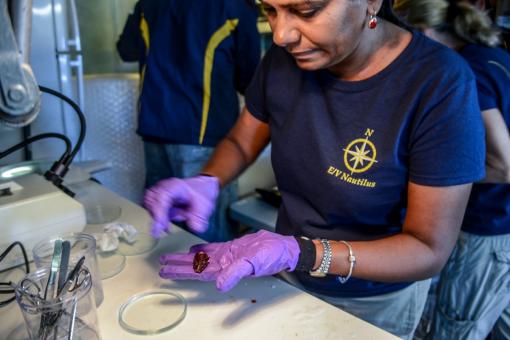
These particular polychaetes love the host mussels in which they live. Dr. Gobin and other scientists suspect they are Branchipolynoe seepensis, and their host mussel is closest to Bathymodiolus boomerang, but they have not yet confirmed the exact species of these organisms.
The mussels live on the methane and filter feed, like intertidal mussels, but consume unique microbes that live in their gills as symbionts. The microbes convert methane to energy that the mussels use as their food source. Their relationship with these microbes is so efficient; the mussels themselves have a reduced digestive tract.
The worms live with the mussels in what is thought to be a commensal relationship, or mutually beneficial, and they feed on the gills of the mussels, as well as other invertebrate organisms.
So why are they blood red? They are full of hemoglobin, which at that depth gives them an increased ability to absorb oxygen efficiently, since dissolved oxygen is limited there.
Khan may not be able to use these guys to control your mind, but they can certainly help us learn a lot about the amazing environment in which they live.
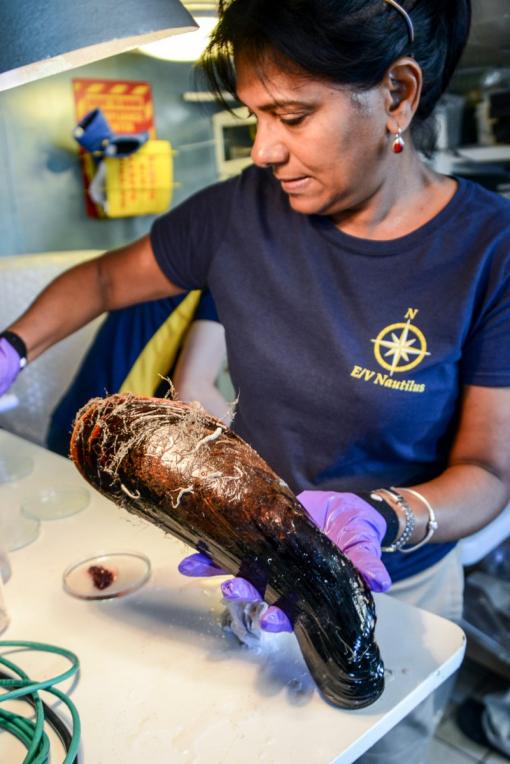
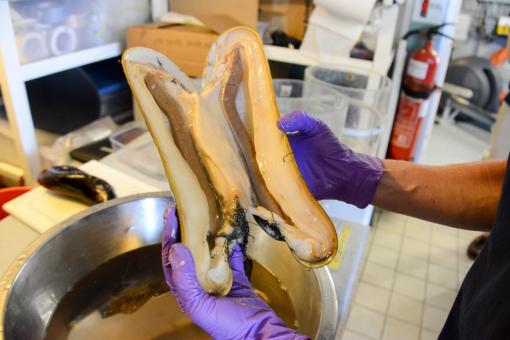
For more information on methane mussels we explored in the Gulf of Mexico, visit our blog post from July and this overview article from the Houston Chronicle.

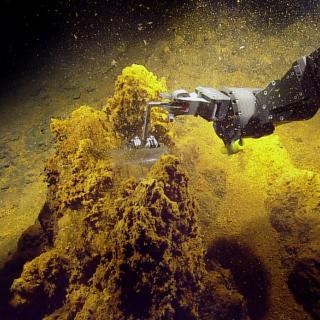
Kick 'em Jenny Submarine Volcano Project
This cruise to the southern Lesser Antilles volcanic arc is part of the INSPIRE project, funded by NSF with the purpose of studying and improving telepresence for ocean exploration. Scientists will implement several student-designed exploration projects led from shore. Kick’em Jenny is the most active submarine volcano in the Caribbean Sea, and during the past century it has shown a history of progressive growth with explosive eruptions.



